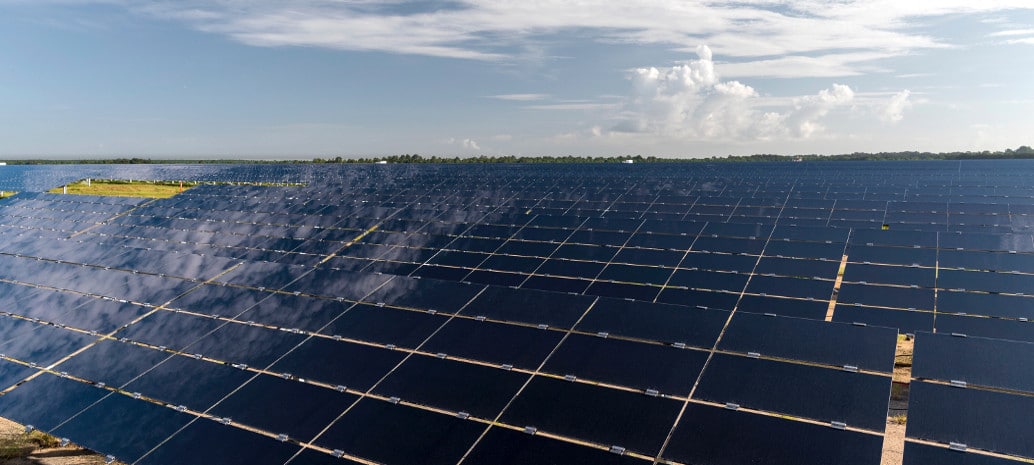Duke Energy Florida has filed with state regulators a proposal to develop 750 MW of new solar in the sunshine state, which the company would then sell in blocks to customers. The filing has been named by Duke, “The Clean Energy Connections” program, though exactly what kind of program it will be is still up for question.
The 750 MW of new solar, which will go online between 2022 and 2024 will be available to customers in 1-kW blocks. If approved by state regulators, the program will open to residential and small businesses for enrollment in 2021 with the program beginning to generate power at the beginning of 2022.
The fee for each block is $8.35 monthly, while the bill credit that customers receive in turn will be 4 cents-per-kWh for the first 36 months, escalating by 1.5% annually thereafter. Duke expects that, by year five of the program, the annual bill credit will exceed the subscription fee. By year seven, customer credits are expected to exceed the charges paid to-date for the program.
The program also has a carve-out and different pricing structure for low-income customers. 26 MW have been set aside for low-income customers, and these customers will pay an $8.35 monthly per-kW subscription fee and receive a $9.03 monthly per-kW bill credit, meaning that these customers, assuming a 3 kW subscription, will save $2.04 every month, or $24.48 annually.
Is it community solar?
While Duke has not yet referred to the program as being community solar, one of the signatories of the filing, the Southern Alliance for Clean Energy (SACE) does, calling it “one of the largest community solar program(s) in the U.S.”
This is where the “nearly 750 MW” phrasing becomes important. In Florida, most large-scale solar solar projects come in at the same capacity: 74.5 MW. This is because projects with a capacity any greater are subject to extra permitting and regulation, which can further clog development. Duke has not yet given potential project locations or capacities, but the company’s wording at least hints to the possibility of ten 74.5 MW installations.
At that point, the definition of the term “community solar” comes into question. It’s unlikely that any single installation in the program will feed just residential customers, but since Duke is using 3 kW blocks for pricing examples, that means that just one project could provide electricity for almost 25,000 customers.
While there’s nothing wrong with that at face value, true community solar projects rarely exceed 20 MW in capacity, are as much geographically defined as they are by capacity and usually fall between 1 MW and 5 MW. Most importantly, these projects are owned by those that have a stake in them, not a large utility. In reality, if these projects are 74.5 MW, which they may not be, it’s more of customer-agnostic renewable energy purchase program than it is true community solar.
There is precedent for this kind of community misnomer, conveniently also taking place in Florida. As part of the utility’s 30×30 plan, in October, Florida Power and Light (FPL) announced that it would be launching a community solar program, under which customers could subscribe to a total of 1.49 GW across 20 projects. All of the projects under this program, SolarTogether, clock in at that same 74.5 MW mark.
At the time of that announcement, SEIA reported that the United States had a total installed community solar capacity of 1,298 MW. While it’s not clear exactly where SEIA sets the community solar line when calculating this, the organization defines community solar as being typically in that 1 MW to 5 MW range.
This could be why Duke has not yet promoted the program as being community solar. Another aspect that could call that designation into question is that traditional community solar projects drive new installations: a group of people get together and get a project built where there were no previous plans for one. In FPL’s case and potentially Duke’s, this capacity was going to be built, regardless of how the generation was sold. It’s not driving new development, just cleverly classifying planned capacity additions.
This content is protected by copyright and may not be reused. If you want to cooperate with us and would like to reuse some of our content, please contact: editors@pv-magazine.com.









By submitting this form you agree to pv magazine using your data for the purposes of publishing your comment.
Your personal data will only be disclosed or otherwise transmitted to third parties for the purposes of spam filtering or if this is necessary for technical maintenance of the website. Any other transfer to third parties will not take place unless this is justified on the basis of applicable data protection regulations or if pv magazine is legally obliged to do so.
You may revoke this consent at any time with effect for the future, in which case your personal data will be deleted immediately. Otherwise, your data will be deleted if pv magazine has processed your request or the purpose of data storage is fulfilled.
Further information on data privacy can be found in our Data Protection Policy.